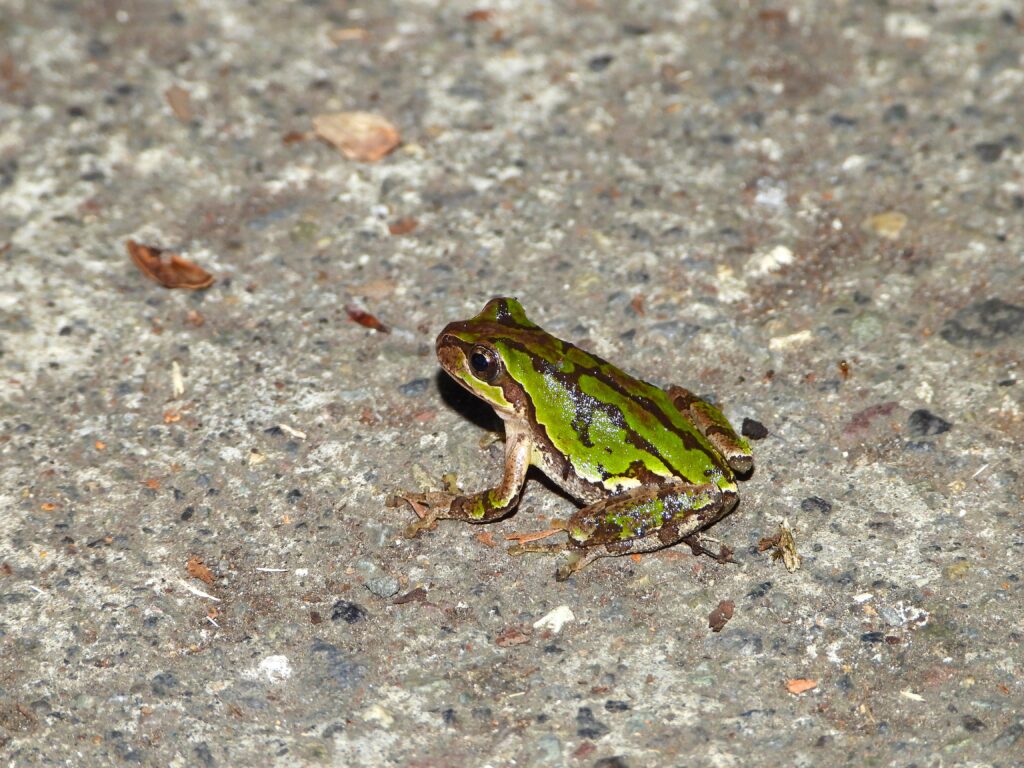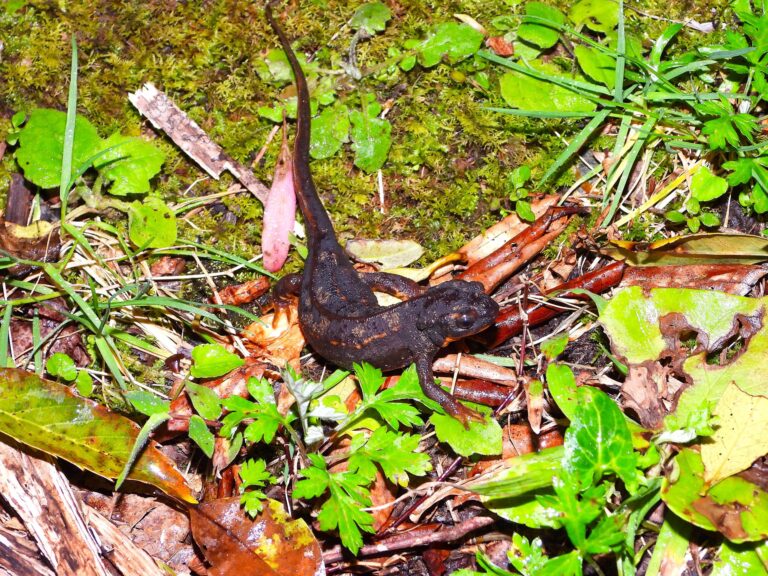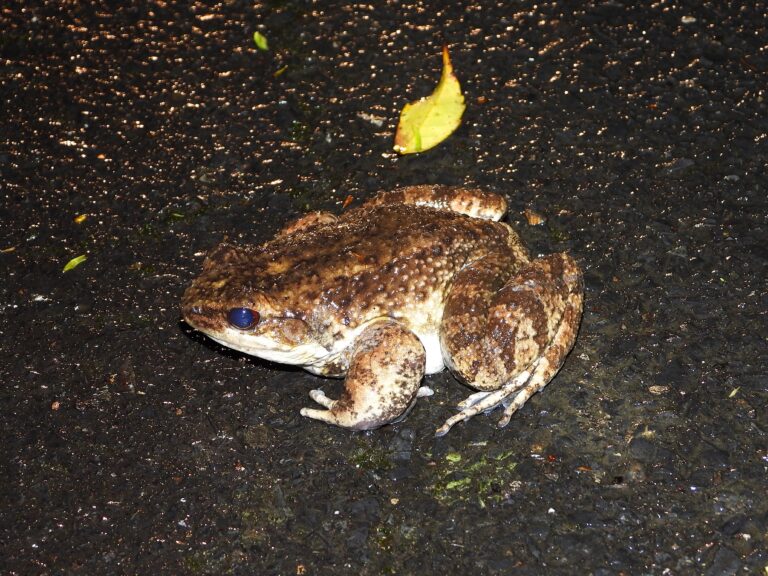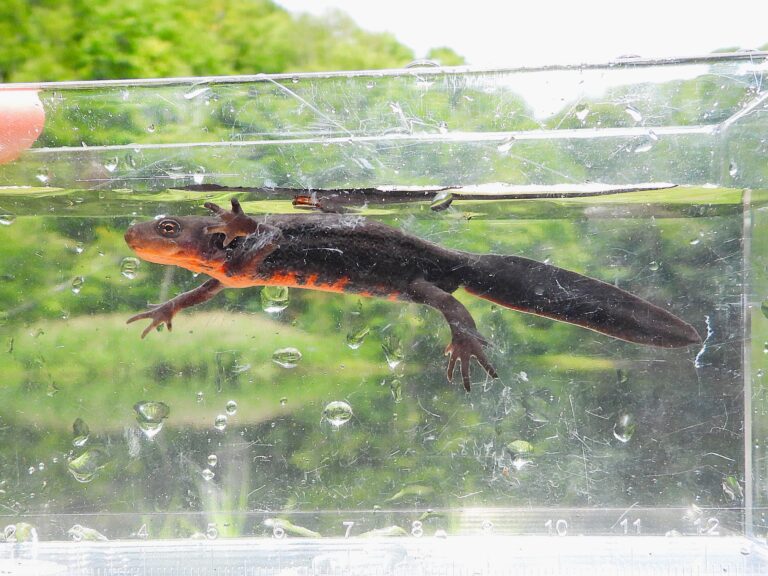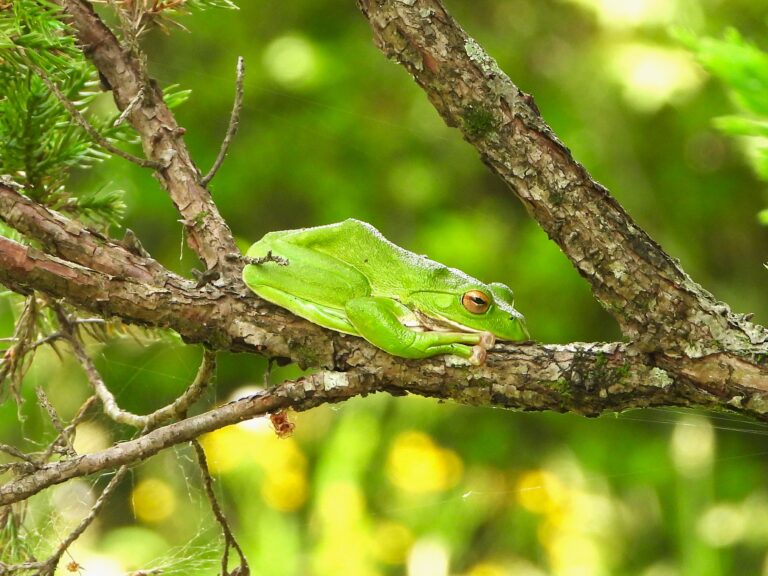Eastern Japanese Tree Frog (Dryophytes leopardus) – Wildlife of Japan
Introduction
The Eastern Japanese Tree Frog is a small, bright-green hylid native to eastern Japan, where its rhythmic trills echo across rice paddies on warm, rainy nights. Long treated as part of Dryophytes japonicus, the eastern populations were described in 2025 as a distinct species, Dryophytes leopardus, based on genetic and morphological evidence. Adoption of this split is ongoing across databases and field guides, so readers may still encounter the older name in some sources.
Appearance
Adults typically measure 3–4 cm snout-to-vent. The dorsum is usually fresh leaf-green but can shift toward brown or gray with background, temperature, and humidity. A dark stripe commonly runs from the snout through the eye toward the shoulder. The belly is pale. Rounded toe pads provide excellent grip on reeds and shrubs. Compared with western D. japonicus, D. leopardus tends to show finer, more scattered spotting on the inner thighs, the feature that inspired its species name.
Habitat & Distribution
Dryophytes leopardus occupies lowlands and foothills wherever shallow water meets vegetation: rice fields and irrigation ditches, marshy edges, ponds, and weedy hedgerows at the margins of villages and towns. It ranges from roughly the Kinki boundary east through Kanto and Tohoku to Hokkaido, replacing D. japonicus in these cooler regions. Its tolerance of semi-modified landscapes makes it one of the most frequently encountered amphibians in eastern Japan.
Behavior
This species is chiefly nocturnal, with peak activity on humid evenings. Males gather at shallow waters to form choruses, timing their calls to minimize overlap with neighbors. By day, frogs rest on leaf undersides or among dense grasses, relying on camouflage and stillness. Individuals readily climb low vegetation and may sit several decimeters above the water while calling.
Diet
An insect-eater by trade, D. leopardus takes flies, moths, small beetles, and spiders, snapping prey with a quick projection of its sticky tongue. Diet varies with local insect abundance across the season.
Reproduction
Breeding runs mainly from late April into early July, later at higher latitudes and elevations. Males call from paddy margins, shallow ponds, and temporary pools. Females attach gelatinous egg masses to submerged plants or debris; clutches commonly number several hundred eggs. Tadpoles develop in still or very slow-moving water and metamorphose as seasonal waters warm and begin to recede.
Conservation
Currently common and locally abundant, D. leopardus tolerates moderate habitat alteration and often coexists with traditional agriculture. Potential pressures include pesticide use, drainage or canalization that removes shallow margins, and pollution of breeding waters. As the species split from D. japonicus is recent, conservation assessments may be updated as distribution and trend data accumulate.
Author’s Impression
On a misty spring night in Tohoku, I watched a tiny green frog climb a rice stem and begin to call—throat swelling like a silver balloon, notes ticking in precise rhythm. That sound, drifting across the paddies, feels like the heartbeat of the rainy season in eastern Japan. Each individual of this species can change its color depending on surroundings and mood, making every observation unique and fascinating. The Japanese tree frog is an amphibian that rewards patient watching—no two individuals ever look exactly the same.
